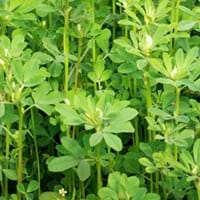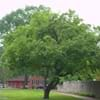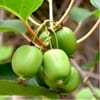Life Span
Perennial
Annual
Type
Flowering Plants, Fruits, Herbs, Shrubs
Fruit, Vegetable
Origin
Australia, South America
Mediterranean, Middle East
Types
Adams Elderberry, Black Beauty Elderberry, Black Lace Elderberry, Johns Elderberry, Nova Elderberry
Not Available
Number of Varieties
Not Available
Habitat
Farms, Homesteads, Near organic waste disposal
Fields, Grassland, Hillside
USDA Hardiness Zone
4-8
5-9
AHS Heat Zone
8-1
Not Available
Sunset Zone
2a, 2b, 3a, 3b, 4, 5, 6, 7, 14, 15, 16, 17
Not Available
Habit
Upright/Erect
Narrow Upright/Fastigiate
Flower Color Modifier
Not Available
Bicolor
Fruit Color
Purple, Red
Yellow
Leaf Color in Spring
Green
Green
Leaf Color in Summer
Green
Green
Leaf Color in Fall
Yellow green
Green, Light Green, Light Yellow
Leaf Color in Winter
Not Available
Light Green
Leaf Shape
Compound
oblong or obovate
Plant Season
Early Spring
Spring, Fall
Sunlight
Full Sun, Part sun
Full Sun
Growth Rate
Medium
Medium
Type of Soil
Loamy, Sandy, Well drained
Clay, Loam, Sand
The pH of Soil
Slightly Acidic
Acidic, Neutral
Soil Drainage
Average
Well drained
Bloom Time
Early Spring, Spring
Early Spring, Spring
Tolerances
Pollution
Drought
Where to Plant?
Ground
Container, Ground, Pot
How to Plant?
Grafting, Seedlings
Seedlings
Plant Maintenance
Medium
Medium
Watering Requirements
Requires regular watering, Use Mulches to help prevent water loss during hot and windy weather
Keep the Soil well drained, Needs a lot of water initially
In Summer
Lots of watering
Lots of watering
In Spring
Moderate
Moderate
In Winter
Average Water
Average Water
Soil pH
Slightly Acidic
Acidic, Neutral
Soil Type
Loamy, Sandy, Well drained
Clay, Loamy, Sandy
Soil Drainage Capacity
Average
Well drained
Sun Exposure
Full Sun, Part sun
Full Sun, Partial Sun, Partial shade
Pruning
Cut or pinch the stems, No pruning needed in the early stages, Prune for shortening long shoots, Prune if you want to improve plant shape, Prune in winter, Prune ocassionally, Remove deadheads
Remove damaged leaves, Remove dead branches, Remove dead leaves
Fertilizers
All-Purpose Liquid Fertilizer
All-Purpose Liquid Fertilizer
Pests and Diseases
Canker, Leaf spot, Powdery mildew, Stem spot, Tomato Ringspot Virus
Aphids, Cercospora leaf spot, Charcoal rot, fungus, Red blotch
Plant Tolerance
Drought
Drought
Flower Petal Number
Single
Single
Foliage Texture
Medium
Medium
Foliage Sheen
Matte
Matte
Attracts
Birds
Aphids, Leafminer
Allergy
Diarrhea, Nausea, Vomiting
Avoid during Pregnancy, Chest Pain, Diarrhea, Skin irritation
Aesthetic Uses
Not Used For Aesthetic Purpose
Not Used For Aesthetic Purpose
Beauty Benefits
Not Available
Acne, Anti-ageing, Moisturizing, Removes dandruff
Environmental Uses
Air purification
Air purification
Medicinal Uses
constipation, Fever, Heart problems, High cholestrol, HIV/AIDS, Nerve pain, swine flu
Manganese, Potassium, Vitamin A, Vitamin B, Vitamin C
Part of Plant Used
Flowers, Fruits
Leaves, Stem
Other Uses
Not Available
Food for animals, Used as a nutritious food item, Used for its medicinal properties
Used As Indoor Plant
No
Yes
Used As Outdoor Plant
Yes
Yes
Garden Design
Not Available
Edible, Herb / Vegetable, Vegetable
Botanical Name
Sambucus nigra
Trigonella foenum-graecum
Common Name
Elderberry
Fenugreek
In Hindi
Elderberry
मेंथी
In German
Holunderbeere
Bockshornklee
In French
Sureau
Fenugrec
In Spanish
Saúco
Fenogreco
In Greek
Elderberry
Τριγωνέλλα
In Portuguese
Sabugueiro
fenacho
In Polish
Bez czarny
Kozieradka
In Latin
Elderberry
Graecum
Phylum
Magnoliophyta
Magnoliophyta
Class
Magnoliopsida
Magnoliopsida
Family
Adoxaceae
Fabaceae
Genus
Sambucus
Trigonella
Clade
Angiosperms, Asterids, Eudicots
Angiosperms, Eudicots, Rosids
Tribe
Not Available
Trifolieae
Subfamily
Not Available
Faboideae
Importance of Elderberry and Fenugreek
Want to have the most appropriate plant for your garden? You might want to know the importance of Elderberry and Fenugreek. Basically, these two plants vary in many aspects. Compare Elderberry and Fenugreek as they differ in many characteristics such as their life, care, benefits, facts, etc. Every gardener must at least have the slightest clue about the plants he wants to plant in his garden. Compare their benefits, which differ in many ways like facts and uses. The medicinal use of Elderberry is constipation, Fever, Heart problems, High cholestrol, HIV/AIDS, Nerve pain and swine flu whereas of Fenugreek is Manganese, Potassium, Vitamin A, Vitamin B and Vitamin C. Elderberry has beauty benefits as follows: Not Available while Fenugreek has beauty benefits as follows: Not Available.
Compare Facts of Elderberry vs Fenugreek
How to choose the best garden plant for your garden depending upon its facts? Here garden plant comparison will help you to solve this query. Compare the facts of Elderberry vs Fenugreek and know which one to choose. As garden plants have benefits and other uses, allergy is also a major drawback of plants for some people. Allergic reactions of Elderberry are Diarrhea, Nausea and Vomiting whereas of Fenugreek have Avoid during Pregnancy, Chest Pain, Diarrhea and Skin irritation respectively. Having a fruit bearing plant in your garden can be a plus point of your garden. Elderberry has no showy fruits and Fenugreek has no showy fruits. Also Elderberry is flowering and Fenugreek is flowering. You can compare Elderberry and Fenugreek facts and facts of other plants too.





